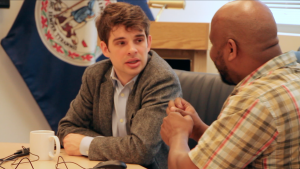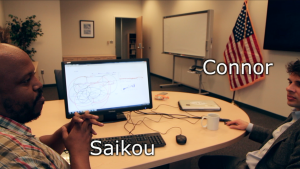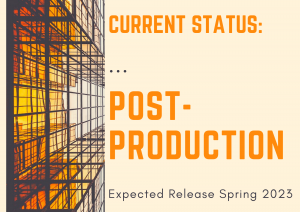 The MRP has been running for 9 months. The team members meet again in Virginia to build agent-based models based on scientific theories of religion, incorporating feedback from consultants. While the consultants had been skeptical about the prospect of modeling religion, the team members push forward, though recognizing that they will not be able to simulate all aspects of religion. “The Beast,” one of the most powerful computers at the Boston University, will aid in building very complex models. The team members start to establish themselves and learn more about the most effective way to combine computer programming knowledge with the scientific study of religion.
The MRP has been running for 9 months. The team members meet again in Virginia to build agent-based models based on scientific theories of religion, incorporating feedback from consultants. While the consultants had been skeptical about the prospect of modeling religion, the team members push forward, though recognizing that they will not be able to simulate all aspects of religion. “The Beast,” one of the most powerful computers at the Boston University, will aid in building very complex models. The team members start to establish themselves and learn more about the most effective way to combine computer programming knowledge with the scientific study of religion. 
Jenn Lindsay, the filmmaker of the MRP project, demonstrates the difficulty of learning simulation platforms and introduces the Complex Learner Agent Simulation Platform (CLASP), a platform the team wants to build that will allow non-modelers to create and run computer simulations without background knowledge of computer programming. The members explain how modeling religion is really modeling academic theories of religion and translating these theories into simulations.
 By synthesizing theories of religion with the methodology of computer modeling, the team members construct agent-based models and system dynamics simulations. The virtual religious mind is called LuCy, Lucid Cybernetic Mind, and will form the basis of other agent-based models. Within LuCy there are elements of smaller models, called NAHUM (Natural Adaptation to Hazard Undulation Model), Agent_Xeno (Intergroup Conflict Model), MERV (Mutually Escalating Religious Violence Model), ERICA (Embedded Ritually Competent Agent), CRED (Credibility Enhancing Display Model, and MORT (Modes of Religiosity Model). The team members are becoming more confident in their work and ready to continue developing the models.
By synthesizing theories of religion with the methodology of computer modeling, the team members construct agent-based models and system dynamics simulations. The virtual religious mind is called LuCy, Lucid Cybernetic Mind, and will form the basis of other agent-based models. Within LuCy there are elements of smaller models, called NAHUM (Natural Adaptation to Hazard Undulation Model), Agent_Xeno (Intergroup Conflict Model), MERV (Mutually Escalating Religious Violence Model), ERICA (Embedded Ritually Competent Agent), CRED (Credibility Enhancing Display Model, and MORT (Modes of Religiosity Model). The team members are becoming more confident in their work and ready to continue developing the models. 

